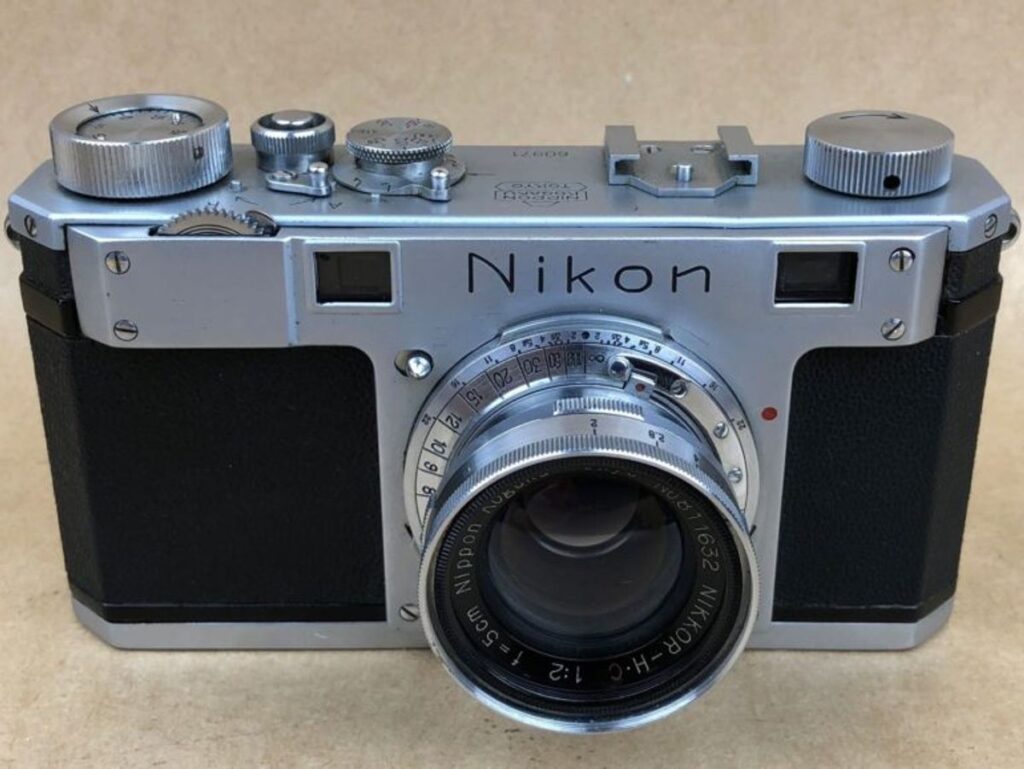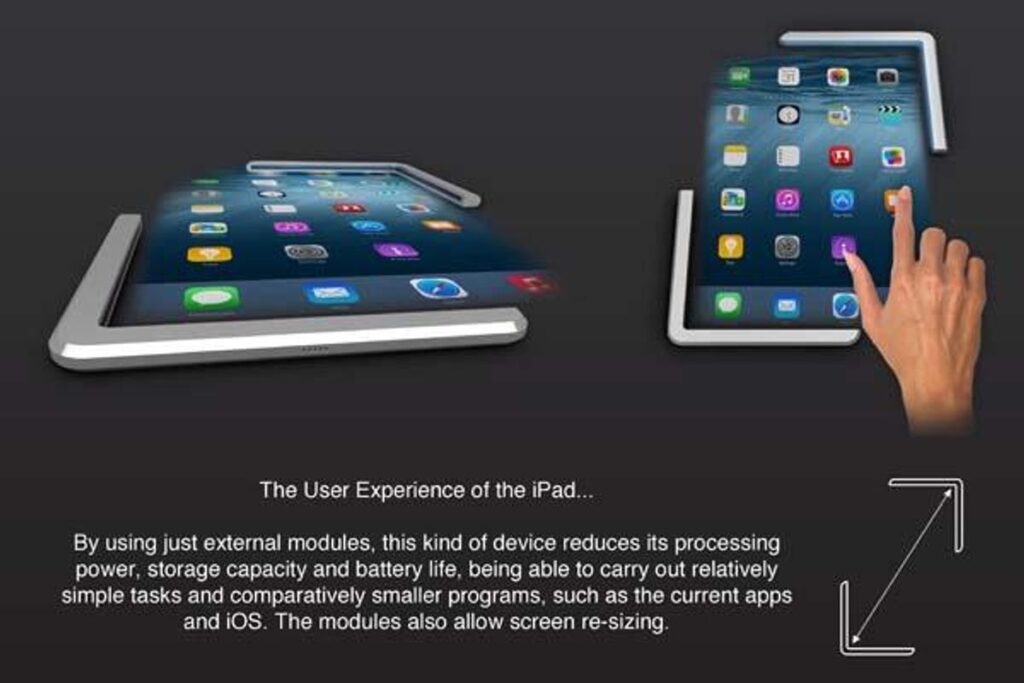The article ‘Streamlining Precision: The Revolution of Optical Measurement Apps’ delves into the transformative advancements in optical measurement technologies and their applications. From the evolution of measurement techniques to the integration of sophisticated software, and the promising future of measurement apps, this piece explores how precision is being redefined in various industries.
Key Takeaways
- Advanced spectrophotometry and quantum optical phenomena are pivotal in enhancing the precision of optical measurement technologies, leading to significant miniaturization and integration.
- Optical imaging modules that combine camera, sensor, and lighting into a single unit are revolutionizing machine vision by offering plug-and-play capabilities and rapid deployment.
- Software plays a critical role in controlling and analyzing optical measurements, with parameterized software providing customizable control, particularly in applications like microfluidics.
- For optimal resolution, it’s essential to match the sizes of lenses and sensors, and to utilize specific imaging techniques like surface inspection and macro imaging for tailored applications.
- The future of optical measurement apps is marked by a growing demand for high-resolution imaging, with compact and high-speed interfaces facilitating faster data acquisition and versatile plug-and-play solutions.
The Evolution of Optical Measurement Technologies

From Traditional Methods to Advanced Spectrophotometry
The transition from traditional optical measurement methods to advanced spectrophotometry marks a significant leap in the ability to extract detailed insights into the characteristics of optical samples. Advanced spectrophotometry offers enhanced accuracy and reliability, enabling scientists and engineers to overcome the limitations of older tools and verify outcomes with greater confidence.
The adoption of variable pathlength spectroscopy, for instance, has revolutionized concentration measurement by eliminating the need for sample dilutions and baseline corrections, thus providing guaranteed linear results across a wide concentration range.
Recent developments in spectrophotometry have also accelerated quality assurance and quality control (QA/QC) processes in production environments. The table below highlights the comparative advantages of advanced spectrophotometry over traditional methods:
As the field of optics and photonics continues to evolve, the integration of advanced spectrophotometric practices is becoming increasingly important for commercial and academic organizations alike. This integration is not only optimizing product development but also paving the way for innovative solutions in laboratory management and semiconductor research.
The Role of Quantum Optical Phenomena in Precision Sensing
The advent of quantum optical phenomena in precision sensing marks a significant leap forward in the field of optical measurement. Squeezed states of light, a quantum resource characterized by reduced noise in one of their quadrature components, are central to this advancement. These states enable higher precision in measurements by mitigating quantum noise, which is a fundamental limit in traditional sensing systems.
The integration of quantum optics into miniaturized devices, particularly through integrated photonics, is reshaping the landscape of sensing technologies. However, the challenge of creating portable and efficient sources of squeezed light remains. Addressing this challenge is crucial for the widespread application of quantum-enhanced sensing.
The synergy between quantum optical phenomena and integrated photonics paves the way for new sensing capabilities, offering unprecedented precision and miniaturization.
Recent developments in thin-film lithium niobate (TFLN) resonator devices demonstrate the potential for monolithic, chip-scale platforms to generate squeezed states efficiently. This innovation is a testament to the ongoing efforts to harness quantum optical technologies for practical sensing applications.
Integrated Photonics: The Path to Miniaturization
The relentless pursuit of smaller, more efficient optical measurement devices has led to significant advancements in integrated photonics. Silicon photonics is at the forefront of this revolution, enabling the creation of compact, high-resolution imaging systems. These systems are not only smaller but also offer superior performance, making them ideal for a wide range of applications, from mobile devices to augmented reality headsets.
Integrated photonics harnesses the power of quantum optical phenomena to reduce noise and enhance the precision of sensing systems. The use of squeezed states of light, with their reduced noise levels, exemplifies the cutting-edge techniques being employed to improve measurement accuracy.
The convergence of advanced spectrophotometry and integrated photonics is driving innovation in optical measurement services. This synergy provides non-contact, high precision data capture, crucial for challenging environments and essential in various industries.
As the technology matures, the manufacturing of photonics ICs is ramping up, although the complexity of the processes and the scarcity of open foundries present challenges. Nonetheless, the promise of photonics ICs continues to spur innovation, paving the way for a future where optical measurement is more precise, efficient, and integrated than ever before.
Optimizing Machine Vision with Optical Imaging Modules

The Integration of Camera, Sensor, and Lighting
The synergy between camera, sensor, and lighting components is critical for optimizing machine vision systems. Choosing the right combination of these elements is essential for capturing high-quality images. For instance, ensuring that the sensor receives enough photons to distinguish the target from the background is a delicate balance that can significantly affect application outcomes.
- Camera: The eye of the machine vision system, capturing images for analysis.
- Sensor: The component that converts light into electrical signals, determining image quality.
- Lighting: Provides the necessary illumination to enhance image contrast and detail.
The integration of these components into a single, compact ‘Imaging Module’ offers a streamlined solution for demanding applications. This approach simplifies the selection and configuration process, allowing for rapid deployment in various industrial settings.
Traditionally, external controllers were used to manage the camera and lighting. However, modern systems often integrate these controls, reducing the need for additional devices and enabling more efficient parameter tuning through both calculations and empirical testing. The pre-configured nature of most lighting systems, with specific geometries and wavelengths, still requires careful consideration and, in many cases, empirical testing to ensure optimal performance.
Plug and Play Solutions for Rapid Deployment
The advent of plug and play solutions has significantly accelerated the deployment of optical measurement systems. A variety of imaging modules are now available, each meticulously configured to optimize component alignment and operations. This allows end-users to rapidly deploy new systems, reaping the benefits of standardized systems, economies of scale, and the module builder’s expertise.
By adopting certain architectures and focusing on key telemetry, the industry can support use cases in ways that streamline operations. This alignment reduces the complexity of choices for vendors and shrinks the time to market for advanced technologies, ultimately enhancing the efficiency of our networks.
The integration of IoT and AI into optical measurement solutions has led to unprecedented precision and efficiency. However, challenges such as technical knowledge gaps remain. The push towards miniaturization and the adoption of multi-axis sensors continue to drive advancements across various industries.
The embedded Linux connectivity methodology, for instance, offers robust infrastructure services that can improve the resilience of communications infrastructure in contemporary culture. These advancements are crucial for satisfying smart grid networking objectives and enhancing implementation sustainability.
Enhancing Precision in Industry 4.0 with Micro Imaging
The integration of micro imaging technology into Industry 4.0 has been a game-changer for manufacturing precision. Micro imaging modules, with their high-resolution capabilities, are pivotal for detailed inspections and quality control. These modules, often comprising an integrated camera, sensor, and lighting, allow for the analysis of the smallest details with a measurement resolution of 1.8 micrometers per pixel.
Five key benefits of Opto Imaging Modules include:
- Enhanced detail recognition for quality assurance
- Rapid deployment due to integrated design
- Economies of scale from standardized systems
- Versatility across various applications
- Precision gaging that transforms manufacturing processes
The synergy between advanced imaging modules and Industry 4.0’s smart manufacturing principles leads to unprecedented levels of precision and control. This is particularly evident in applications such as machine vision microscopy and surface inspection, where the minutest imperfections can be detected and addressed.
The demand for such high-resolution imaging is not limited to manufacturing. It extends to life sciences, geo mapping, and even the film industry, where the detail and quality of images are paramount. The Falcon2 and Falcon4 cameras exemplify this trend, being designed for a wide variety of applications that require ultra-high-resolution images.
Software Synergy in Optical Measurement

The Importance of Parameterized Software for Control and Analysis
The advent of parameterized software has been a game-changer in the realm of optical measurement, enabling unprecedented control and analysis. This software allows for the automation of complex tasks, ensuring that the optimization of measurement methods is both efficient and precise. By leveraging such software, laboratories can significantly reduce the time spent on method development, which is often a cumbersome and error-prone process.
In the context of optical measurement, the ability to adjust and control various parameters through software is crucial. It simplifies the process of method refinement by allowing multiple parameters to be tested and adjusted simultaneously. This not only speeds up the development process but also enhances the reliability of the results. Moreover, the integration of software with regulatory compliant-ready technology ensures that the automation does not come at the cost of compliance.
The synergy between advanced software and optical measurement hardware paves the way for innovative solutions that revolutionize the optical industry, enhancing design, production efficiency, and supply chain management.
Furthermore, the right combination of feature-rich equipment and software can eliminate the need for additional controllers, reducing system complexity and the associated costs. This integration is particularly beneficial in applications where space is at a premium and simplicity is key.
Customizable Droplet Tracking in Microfluidics
The integration of camera sensor, lens, and lighting into a single module has transformed the landscape of microfluidics droplet tracking. These compact imaging modules, such as those offered by Opto, are designed to streamline the setup process, allowing for rapid deployment and immediate use. With the ability to choose lens magnification and light source options, users can tailor the system to their specific application needs.
The parameterized software accompanying these modules is a game-changer for droplet analysis. It provides intuitive controls for monitoring and controlling droplet size, with the added benefit of user-friendly displays. This software enables the sequential identification and logging of droplets, which is crucial for data export and mining, supporting the advancement of research and development in various fields.
The upcoming modules capable of tracking, counting, and analyzing fast-moving objects at speeds exceeding 150 FPS are particularly promising for high-speed biomedical and microfluidics applications.
The Opto Inverse Microscope Profile M, with its pressure-based system for fluid movement and dosing nozzle, exemplifies the revolution in creating microfluids systems. It simplifies the process, making it more accessible and efficient for users to generate and analyze microfluidic droplets.
Data Mining and Export Capabilities
In the realm of optical measurement, the ability to mine data for insights and export it for further analysis is crucial. Advanced optical measurement apps are enhancing these capabilities, allowing for more efficient data handling and better decision-making. Purpose-built apps drive productivity by integrating seamlessly with existing systems, offering immersive visualizations, quicker prototyping, and enhancing customer loyalty.
With the integration of machine learning (ML) and artificial intelligence (AI), data processing and visualization solutions are becoming more sophisticated, enabling power-quality measurements and monitoring to reach new heights of precision and utility.
The transition from siloed datasets to a fully digital laboratory ecosystem is a significant step forward. It fosters global teamwork and secures valuable datasets and intellectual property. Here’s a glimpse into the structured approach that is redefining data management in R&D:
- Capturing and securing valuable datasets
- Transitioning to digital laboratory ecosystems
- Employing predictive AI/ML tools for sustainability and efficiency
- Overcoming the challenges of ‘small data’ in product development
These advancements are not just about storing and sharing large amounts of data; they are about transforming data into actionable insights that drive innovation and efficiency across various industries.
Application-Specific Optical Configurations
Matching Lens and Sensor Sizes for Optimal Resolution
Achieving the highest quality in optical measurement hinges on the precise alignment of lens and sensor sizes. The lens must not only be the right size but also project focused light accurately onto the sensor’s pixel array. This ensures that the full resolution of the sensor is utilized without waste.
- Lens selection is critical, as it must ‘cover’ the light-sensitive areas of the sensor.
- Aspect ratio should match the target’s field of view to avoid unnecessary resolution and cost.
- Optical format and sensor coverage fit are essential for optimal image quality.
The interplay between lens optical format and sensor dimensions is a delicate balance that can significantly impact the Modular Transfer Function (MTF) outcomes, affecting the sharpness and contrast of the image.
Understanding spatial resolution and the sensor-coverage fit of a lens is as important as the optical quality of the lens itself. Lighting conditions also play a crucial role in the final image quality. When these elements are in harmony, one can achieve impressive results without incurring extra costs for excessive resolution, bandwidth, or processing power.
Surface Inspection and Macro Imaging Techniques
In the realm of optical measurement, surface inspection and macro imaging stand out for their ability to capture intricate details on a variety of materials. Surface inspection is crucial for analyzing highly-reflective metal surfaces, where precision is paramount. Macro imaging, on the other hand, deals with larger scenes or objects, utilizing megapixel sensors and telecentric optics to provide comprehensive views.
The benefits of using Opto Imaging Modules for these applications are numerous. Here’s a brief overview:
- Machine vision microscopy: This includes hardness testing, bond inspection, scratch analysis, and more, with a focus on automated measurements and documentation.
- Industry 4.0 production micro imaging: Achieves a measurement resolution of 1.8 micrometers per pixel, enabling the analysis of the smallest details.
- Rapid sub-micron IR imaging: Allows for the inspection of components to determine their condition, such as detecting electric discharge, without the need for costly scheduled replacements.
In scenarios where precision is non-negotiable, the ability to switch from a binned image at high speed to full-resolution for high-quality detail images is invaluable. This flexibility is essential for applications like locating a target blob in a large field and then zooming in for detailed inspection.
Advancements in digital eyewear measurement techniques have revolutionized precision and customization, enhancing visual clarity and comfort for individuals through tailored lens designs and advanced imaging technologies.
Adjustable Emission Angles and Optical Accessories
The versatility of optical measurement systems is greatly enhanced by the ability to adjust emission angles and utilize various optical accessories. Optical configurations can be finely tuned to meet the specific requirements of diverse applications, ensuring precision and adaptability. For instance, lens positions can be adjusted to alter emission angles, which can range from a narrow 10 degrees to a wide 90 degrees, accommodating different field-of-view needs.
Optical accessories such as polarizers, linescan films, and cylindrical lenses expand the functionality of measurement devices. These components can be critical in achieving the desired imaging results, especially when dealing with complex lighting conditions or unique material properties. The integration of such accessories allows for a more tailored approach to optical measurement, providing solutions that are both efficient and effective.
The ability to modify optical elements and select appropriate accessories is fundamental in delivering high-resolution images across various installation and shooting conditions.
Below is a list of common optical accessories and their applications:
- Polarizer: Reduces glare and reflections, enhancing contrast.
- Linescan Film: Improves image quality in linescan camera systems.
- Cylindrical Lens: Focuses light into a line, useful in laser scanning applications.
These adjustments and additions are not only beneficial for the quality of the measurements but also contribute to the ease of integration into existing systems.
The Future of Optical Measurement Apps

Demand for High-Resolution Imaging Across Various Industries
The quest for finer detail and precision has led to an unprecedented demand for high-resolution imaging in a multitude of industries. High-resolution cameras, such as the Falcon2 and Falcon4, are now pivotal in fields ranging from industrial inspection to aerial imaging.
The convergence of high-resolution sensors with high-speed interfaces has revolutionized the way we capture and process images. This synergy allows for the capture of large fields of view without the need for multiple cameras and complex image-stitching processes.
The following table highlights some of the key applications and the corresponding camera models that cater to the need for high-resolution imaging:
These advancements not only enhance the capabilities of existing applications but also open doors to new possibilities in imaging technology.
The Impact of Compact, High-Speed Interfaces on Data Acquisition
The advent of compact, high-speed interfaces has significantly transformed the landscape of data acquisition in optical measurement applications. Interfaces like USB, GigE, Camera Link, and CoaXPress have revolutionized the way cameras and computers communicate, each offering different benefits in terms of throughput capacity, cable length, and cost. The critical factor is ensuring the interface can handle the volume of image data relative to the software’s processing capabilities.
For instance, Teledyne DALSA’s Genie Nano series now includes a 10GigE interface, which is a substantial leap from the previous 1, 2, and 5GigE options. This enhancement is not just about speed; it’s about enabling higher frame rates and more efficient data handling. The table below illustrates the throughput capabilities of various interfaces:
Moreover, the integration of devices like the Xtium2-XGV PX8 frame grabber exemplifies how hardware can streamline the data acquisition process. These devices not only facilitate image transfer but also enhance reliability and reduce the load on the host PC, making them invaluable in complex optical measurement setups.
The synergy between compact interfaces and advanced software is paving the way for unprecedented precision and efficiency in optical measurements. The Optigrid system is a testament to this evolution, offering a user-friendly design that simplifies the process and reduces equipment needs while enhancing the user experience for professionals in various fields.
Prospects for Plug-and-Play Optical Solutions
The future of optical measurement apps is closely tied to the development of plug-and-play solutions that promise to revolutionize the industry. These solutions are designed to simplify the integration process, making it more accessible and less time-consuming for users across various sectors.
The seamless integration of these optical solutions into existing systems is a testament to their versatility and user-friendliness. They are not just a convenience but a necessity for businesses looking to stay competitive in a rapidly evolving technological landscape.
With the advent of technologies like the LPO Transceiver, the industry is witnessing a significant shift towards devices that are not only compact but also boast high-speed interfaces. This evolution is critical for enhancing data acquisition and processing capabilities. The table below illustrates the anticipated improvements in key areas of optical measurement technology:
As we embrace these advancements, it is clear that the future holds a landscape where optical measurement is more integrated, efficient, and readily available than ever before.
As we peer into the horizon of technological advancements, the future of optical measurement apps promises to revolutionize the way we perceive and interact with the world around us. These sophisticated applications are set to enhance precision, efficiency, and user experience across various industries. To stay ahead of the curve and discover the cutting-edge solutions that will shape tomorrow, visit our website and explore OPTIGRID, our flagship optical measurement tool. Embrace the future today and transform your approach to optical measurement.
Conclusion
The advent of optical measurement apps signifies a transformative leap in various industries, from manufacturing to life sciences. These applications, with their ability to deliver high-resolution images directly to PCs, have eliminated the need for multiple cameras and complex image-stitching processes. The integration of advanced spectrophotometry, quantum optical phenomena, and miniaturized photonics has led to the development of compact, plug-and-play sensors that offer unprecedented precision. The Opto Imaging Modules and microfluidics systems exemplify the strides made in this field, providing key benefits such as integrated components, customizable software, and high measurement resolution. As we continue to harness the power of these optical innovations, we can expect a future where precision is not just an aspiration but a readily achievable standard in technological applications.
Frequently Asked Questions
What advancements have been made in optical measurement technologies?
Advancements include the transition from traditional methods to advanced spectrophotometry, the utilization of quantum optical phenomena for precision sensing, and the development of integrated photonics for device miniaturization.
Which industries require high-resolution imaging from optical measurement apps?
High-resolution imaging is required in industries like manufacturing inspection, geo mapping, life sciences, and the film industry, where detail is crucial for tasks such as defect detection and field of view analysis.
How have optical imaging modules been optimized for machine vision applications?
Optical imaging modules have been optimized through the integration of camera, sensor, and lighting into compact units, providing plug and play solutions with USB-C connectivity for rapid deployment and minimal configuration.
What is the significance of parameterized software in optical measurement?
Parameterized software is crucial for controlling and analyzing optical measurements, such as droplet tracking in microfluidics, and it facilitates user-friendly operation, data logging, and export for further analysis.
How are lens and sensor sizes matched for optimal resolution in optical configurations?
Matching lens and sensor sizes is essential to ensure the lens’ projection of focused light covers the sensor array effectively, making full use of the sensor’s resolution for optimal image quality.
What are the future prospects for plug-and-play optical measurement solutions?
The future prospects include a growing demand for high-resolution imaging across various industries, the impact of compact, high-speed interfaces on data acquisition, and the continued development of user-friendly, plug-and-play optical solutions.

I am a seasoned software engineer with over two decades of experience and a deep-rooted background in the optical industry, thanks to a family business. Driven by a passion for developing impactful software solutions, I pride myself on being a dedicated problem solver who strives to transform challenges into opportunities for innovation.
